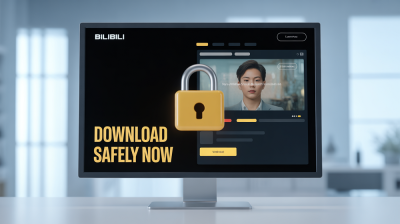Ever wondered if a simple lemon could power your devices? It sounds like something out of a science fiction movie, but lemon power generation is a fun and educational way to understand electricity. Not only is it an engaging project for kids and adults alike, but it also offers a glimpse into the fascinating world of chemical reactions. This blog will guide you through the process of creating a lemon battery, exploring tutorials available on Dailymotion that can make this experience even more enlightening. Let's squeeze out some knowledge!
Understanding the Science Behind Lemon Batteries
Lemon batteries are a classic example of how chemical energy can be converted into electrical energy. But how does that work? Let’s break it down!
At its core, a lemon battery operates on the principles of electrochemistry. Here are the key components:
- Electrodes: Typically, you use two different metals—commonly copper and zinc. The copper acts as the positive electrode (cathode), while zinc serves as the negative electrode (anode).
- Lemon Juice: The juice is acidic and acts as an electrolyte, facilitating the movement of ions between the electrodes.
When you insert the electrodes into the lemon, a chemical reaction occurs:
| Process | Reaction |
|---|---|
| Oxidation at Zinc Electrode | Zn → Zn²⁺ + 2e⁻ |
| Reduction at Copper Electrode | 2e⁻ + 2H⁺ → H₂ |
This movement of electrons from the zinc electrode to the copper electrode generates an electric current, which can be harnessed to power small devices like LEDs. It's a simple yet effective demonstration of how fruits can contribute to renewable energy practices, making learning both fun and practical!
Also Read This: How to Improve Your English Speaking: Tips and Practices on Dailymotion
3. Materials Needed for Your Lemon Battery Project
Ready to power up your creativity with a lemon battery? Before diving into the fun, let’s gather all the materials you’ll need. Don’t worry; it’s super simple and most of these items might already be lying around your home!
- Lemons: You’ll need at least two fresh lemons. The juicier, the better!
- Copper Coins or Copper Wire: These will act as one of the electrodes. If you don’t have coins, get some copper wire instead.
- Galvanized Nails: These nails are coated in zinc and will serve as the other electrode.
- Multimeter: This handy device will help measure the voltage and current produced by your lemon battery.
- Wires: Some insulated copper wires will be needed to connect everything together.
- Knife or Scissors: You’ll use these to make small cuts in the lemons.
- Optional: LED Light or Small Clock: To really see your lemon battery in action, connect it to a small light or clock!
Once you’ve gathered these materials, you’re all set to spark some energy. It’s not just about science; it’s about having a blast while learning!
Also Read This: How to Do Skills Like Cristiano Ronaldo on Dailymotion: A Step-by-Step Football Guide
4. Step-by-Step Guide to Creating a Lemon Battery
Let’s get to the exciting part—creating your very own lemon battery! Follow these simple steps, and you’ll be amazed at what you can power.
- Prepare the Lemons: Start by rolling the lemons on a hard surface. This helps release the juice inside, making them more conductive.
- Insert the Electrodes: Take a copper coin (or copper wire) and a galvanized nail. Insert the coin into one lemon and the nail into another, making sure they don’t touch each other.
- Connect the Wires: Use insulated wires to connect the copper coin from the first lemon to the nail in the second lemon. This is what creates the circuit!
- Measure the Voltage: Now, grab your multimeter! Set it to measure voltage and attach the probes to the copper and zinc electrodes to see how much electricity you’ve generated.
- Test Your Power: If you have an LED light or a small clock, connect it to the wires and watch it come to life! You just powered something with lemons!
And there you have it! Your lemon battery is ready to impress. This project not only teaches you about electricity but also shows how fun and innovative science can be!
Also Read This: Ultimate Guide to Making Money with Dailymotion Videos and Channels
Exploring Dailymotion Tutorials for Visual Guidance
If you're looking to produce electricity from lemons, Dailymotion is a treasure trove of visual tutorials that can make the process much simpler and more engaging. Watching someone else tackle the project can help clarify the steps and prevent confusion. Here’s how you can make the most of these resources:
- Search Effectively: Start by typing keywords like "lemon battery tutorial" or "DIY lemon electricity" into the Dailymotion search bar. This will yield a variety of videos tailored to your needs.
- Follow Along: Choose a tutorial with clear instructions and a friendly presenter. Make sure to pause the video at key moments to give yourself time to replicate the steps accurately.
- Take Notes: Jot down important points, such as the materials needed and any specific techniques highlighted in the video. This will help you stay organized when you gather your supplies.
- Check Comments: Don’t overlook the comment section! It’s often filled with valuable insights from other viewers who may have tried the project themselves. You might find tips on what worked or didn’t work for them.
Using Dailymotion as a tutorial resource can enhance your understanding and execution of producing electricity from lemons. With visual guidance, you’ll be more equipped to tackle any challenges that arise along the way!
Also Read This: Evaluating the Legitimacy of Rumble.com
Common Mistakes to Avoid When Producing Electricity from Lemons
While creating a lemon battery sounds like a fun project, there are some common pitfalls that can hinder your success. To ensure your experiment goes smoothly, here are key mistakes to dodge:
- Using the Wrong Materials: Make sure you use fresh lemons, copper coins (or copper wire), and galvanized nails (zinc) for the best results. Avoid using old or rotten lemons, as they won’t produce sufficient juice for conductivity.
- Poor Connections: Double-check that your connections are secure. Loose connections can lead to weak or nonexistent electrical output. Make sure the copper and zinc components are fully inserted into the lemon.
- Neglecting to Measure Voltage: Don’t skip the step of measuring the voltage produced. Use a multimeter to check your battery's output. This ensures you’re actually generating electricity!
- Ignoring Citric Acid Levels: If you’re using multiple lemons, be aware that their acidity can vary. Mixing lemons of different ripeness might yield inconsistent results. Stick to similar lemons for uniformity.
By avoiding these common mistakes, you'll enhance your chances of successfully producing electricity from lemons. Remember, experimentation is key, so have fun while you learn!
Also Read This: Craft Stylish Paper Shoes with Dailymotion Tutorials
7. Real-Life Applications of Lemon Batteries
Lemon batteries might sound like a fun science project, but their applications stretch beyond the classroom. The idea of generating electricity from a lemon can inspire innovative solutions in various fields. Here are some real-life applications:
- Educational Tools: Lemon batteries are often used in schools to teach students about basic chemistry and electricity. This hands-on experiment helps demystify concepts like voltage and conductivity.
- Emergency Power Source: In a pinch, a lemon battery can serve as a temporary power source for low-energy devices like LED lights. While it won’t power your smartphone, it can provide a glow during a camping trip!
- Environmental Awareness: Using natural materials to generate electricity fosters conversations about renewable resources and sustainability. Schools and communities can use lemon batteries to illustrate how we can harness the power of nature.
- DIY Projects: Hobbyists and makers often experiment with lemon batteries for fun projects. From powering small motors to creating art installations, the creative possibilities are endless.
- Scientific Research: Lemon batteries can be a stepping stone for experiments in bioenergy. Researchers are exploring organic materials for energy production, and lemons provide a simple, accessible starting point.
These applications demonstrate that lemon batteries are more than just a quirky experiment; they can inform, inspire, and even generate a little power when needed!
8. Conclusion and Further Resources
Producing electricity from lemons is a captivating intersection of science and fun! Whether you're a student, educator, or just curious about how things work, this simple experiment opens doors to understanding electrical principles. Here’s a quick recap:
- Lemon batteries illustrate the concept of chemical energy conversion.
- They can be used for educational purposes and spark interest in science.
- Creative applications demonstrate their role in DIY projects and awareness of renewable resources.
For those eager to dive deeper, there are plenty of resources available:
| Resource Type | Details |
|---|---|
| Dailymotion Tutorials | Search for lemon battery tutorials for step-by-step guides and experiments. |
| Science Blogs | Explore science blogs that discuss renewable energy and DIY projects including lemon batteries. |
| YouTube Channels | Check out educational channels that cover basic electronics and fun experiments. |
So grab a lemon, some copper and zinc, and start experimenting! Who knows? You might just spark your own interest in renewable energy.
 admin
admin








